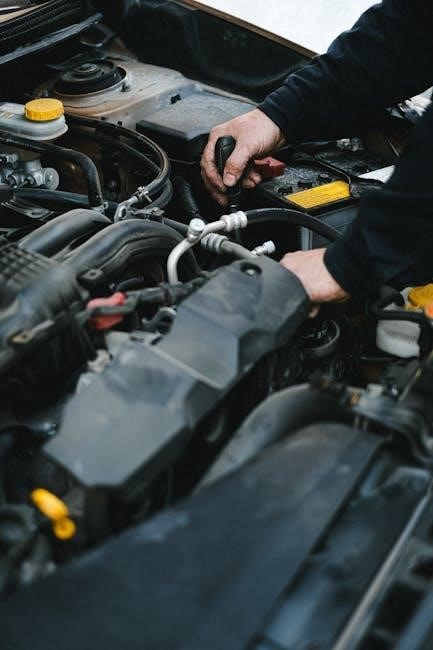Manual vs. Automatic Transmissions: A Comprehensive Guide
Choosing between manual and automatic transmissions presents a fundamental decision for drivers. Both offer distinct experiences with advantages and disadvantages. This guide explores the nuances of each, aiding you in determining which aligns best with your driving style, needs, and preferences. Learn all of the basics now!
The debate between manual and automatic transmissions has persisted for decades, evolving alongside automotive technology. Once, manual transmissions were synonymous with superior performance and fuel efficiency. However, modern automatics have closed the gap, even surpassing manuals in some aspects. This creates a complex decision for prospective car buyers.

The “vote with your wallet” suggests automatic transmissions dominate the market, reflecting a preference for convenience and ease of use. Yet, a dedicated community remains loyal to the engaging experience offered by manual transmissions. Factors such as driving habits, personal preferences, and intended use significantly influence the choice.
This guide delves into the pros and cons of each transmission type, examining their mechanics, performance characteristics, and practical considerations. We will explore how each impacts fuel efficiency, cost of ownership, and the overall driving experience. Ultimately, the “better” transmission is subjective, depending on individual needs and priorities. Understanding the nuances of each allows for an informed decision, ensuring satisfaction with your chosen vehicle. Whether you prioritize control, comfort, or cost savings, this guide provides the necessary insights.
Understanding Manual Transmissions
Manual transmissions, often called “stick shifts,” place the driver in direct control of gear selection. This engagement requires coordinating the clutch pedal and gear lever to manually shift between gears. The driver determines when to change gears, optimizing engine performance and fuel efficiency based on driving conditions. This direct connection fosters a sense of involvement and control appreciated by many driving enthusiasts.

The operation involves disengaging the engine from the transmission via the clutch, selecting the desired gear, and smoothly re-engaging the engine. Mastering this process requires practice and coordination but offers a rewarding driving experience. Manual transmissions typically have fewer complex parts compared to automatics, potentially leading to lower maintenance costs.
While modern automatics have narrowed the performance gap, manual transmissions still offer a unique driving experience. The driver actively participates in the power delivery, choosing the optimal gear for acceleration, deceleration, and maneuvering. This level of control can be particularly appealing in challenging driving situations or for those who simply enjoy the tactile feedback and connection with the vehicle. Understanding the mechanics and nuances of manual transmissions is crucial for appreciating their distinct characteristics.
How Manual Transmissions Work
Manual transmissions operate through a system of gears, shafts, and a clutch, all working in concert to transfer engine power to the wheels. The engine’s rotational force is initially delivered to the input shaft of the transmission. This shaft is connected to a series of gears of varying sizes, each corresponding to a different gear ratio.
The driver selects a specific gear by using the gear lever, which engages a synchronizer. The synchronizer matches the speed of the selected gear to the speed of the output shaft. This allows for a smooth and seamless gear engagement. Simultaneously, the clutch pedal is depressed, disengaging the engine from the transmission, allowing the gears to be changed without damage.
Once the desired gear is selected and the clutch is released, the engine’s power flows through the chosen gear, to the output shaft, and finally to the vehicle’s wheels. Different gear ratios provide varying levels of torque and speed. Lower gears offer higher torque for acceleration, while higher gears provide greater speed and fuel efficiency at cruising speeds. The driver controls this entire process, selecting the appropriate gear based on driving conditions and desired performance.
Pros of Manual Transmissions
Manual transmissions offer several distinct advantages that appeal to certain drivers. One primary benefit is the enhanced level of driver engagement and control. With a manual transmission, the driver actively selects each gear, allowing for a more intimate connection with the vehicle and a greater sense of command over its performance. This engagement can be particularly rewarding for those who enjoy a more involved driving experience.
Historically, manual transmissions have been known for their superior fuel efficiency compared to automatics. While modern automatic transmissions have narrowed this gap, manuals often retain a slight edge, especially in older vehicles. This fuel efficiency stems from the direct mechanical connection between the engine and the wheels, minimizing energy loss.
Furthermore, manual transmissions typically have simpler designs and fewer components than automatics, leading to lower maintenance costs and increased reliability. Repairs, when needed, are generally less expensive. Finally, vehicles equipped with manual transmissions are often less expensive to purchase upfront than their automatic counterparts, making them an attractive option for budget-conscious buyers.
Cons of Manual Transmissions
Despite their advantages, manual transmissions also present several drawbacks. The most significant is the increased effort and skill required to operate them. Drivers must coordinate the clutch pedal, gear shifter, and throttle, demanding more attention and physical exertion, especially in stop-and-go traffic. This can lead to driver fatigue and discomfort, particularly during long commutes or in congested urban environments.
Moreover, mastering a manual transmission takes time and practice. New drivers may struggle with stalling, jerky shifts, and difficulty coordinating the various controls. This learning curve can be frustrating and potentially unsafe, especially for inexperienced drivers.

In addition, manual transmissions are becoming increasingly rare in modern vehicles. This limited availability reduces the selection of cars available with a manual option and may make finding replacement parts or qualified mechanics more challenging. Finally, some drivers find the constant shifting and clutch engagement distracting, preferring the ease and convenience of an automatic transmission that allows them to focus more on the road.
Understanding Automatic Transmissions
Automatic transmissions represent a significant departure from their manual counterparts, offering a simplified and more convenient driving experience. Unlike manual transmissions, which require the driver to manually shift gears using a clutch and gear lever, automatic transmissions handle gear changes automatically based on the vehicle’s speed, engine load, and other factors.
The core principle behind automatic transmissions is the use of a torque converter, a fluid coupling that transmits power from the engine to the transmission. This eliminates the need for a clutch pedal, making the driving process much easier, especially in stop-and-go traffic. The transmission’s internal computer, or transmission control unit (TCU), monitors various sensors and determines the optimal gear for the current driving conditions.
Automatic transmissions offer a smoother and more seamless driving experience, as gear changes are typically imperceptible to the driver. They also reduce driver fatigue and stress, particularly in heavy traffic, as the driver doesn’t need to constantly engage the clutch and shift gears. With only two pedals and no manual clutch, driving becomes a simpler process.
How Automatic Transmissions Work
Automatic transmissions employ a complex system to seamlessly shift gears without driver intervention. At the heart of this system lies the torque converter, a fluid coupling replacing the manual clutch. The torque converter allows the engine to remain running even when the wheels are stopped, preventing stalling and enabling smooth starts.
Inside the transmission, planetary gear sets are arranged to provide different gear ratios. These gear sets are engaged and disengaged by a series of clutches and bands, controlled by hydraulic pressure. The transmission control unit (TCU), a sophisticated computer, monitors various sensors throughout the vehicle, including speed sensors, throttle position sensors, and engine load sensors.
Based on this data, the TCU determines the optimal gear for the current driving conditions. It then signals the hydraulic system to engage the appropriate clutches and bands, resulting in a smooth and efficient gear change. Modern automatic transmissions often feature multiple gears, improving fuel efficiency and performance. Some also incorporate advanced features like adaptive learning, which adjusts shift patterns to suit individual driving styles, and manual shift modes, granting drivers limited control over gear selection.
Pros of Automatic Transmissions
Automatic transmissions offer several compelling advantages, primarily centered around ease of use and convenience. The absence of a clutch pedal and manual gear shifting simplifies the driving experience, particularly beneficial in stop-and-go traffic. This allows drivers to focus more on navigating and less on the mechanics of driving, enhancing safety and reducing fatigue, especially during long commutes.
Modern automatics have narrowed, and sometimes surpassed, the fuel efficiency gap compared to manuals. Continuously Variable Transmissions (CVTs) and advanced multi-gear automatics often deliver comparable or even superior fuel economy. The smoother gear transitions in automatics contribute to a more comfortable and refined ride. They eliminate the jerky shifts sometimes experienced in manual transmissions, providing a seamless and enjoyable driving experience.
Automatic transmissions generally require less maintenance than manual transmissions, potentially saving on repair costs. They are also a good option for drivers with physical limitations that make operating a clutch difficult. Their user-friendly nature makes them ideal for new drivers or those who prefer a relaxed driving experience.
Cons of Automatic Transmissions
Despite their convenience, automatic transmissions also present certain drawbacks. One significant disadvantage is the reduced level of driver control. The computer handles gear selection, limiting the driver’s ability to choose specific gears for optimal performance or engine braking. This can diminish the sense of engagement and connection with the vehicle, which many driving enthusiasts value.
Automatic transmissions often come with a higher purchase price compared to their manual counterparts. The more complex components and engineering contribute to the increased cost. In some cases, automatic transmissions may still exhibit slightly lower fuel efficiency than manuals, although this gap has significantly narrowed with technological advancements. Certain automatic transmissions, especially older models, can feel less responsive than manuals, leading to a delayed or sluggish acceleration.
Drivers seeking a more involved and hands-on driving experience may find automatic transmissions less appealing. The lack of a clutch pedal and gear lever removes a key element of driver interaction and control. Some drivers may also find maintenance and repairs to be more costly.
Fuel Efficiency: Manual vs. Automatic
The debate over fuel efficiency between manual and automatic transmissions has evolved significantly over time. Traditionally, manual transmissions held a clear advantage, offering superior fuel economy due to their simpler design and direct mechanical connection between the engine and wheels. Drivers could optimize fuel consumption by selecting the appropriate gear for the driving conditions.
However, modern automatic transmissions, particularly those with multiple gears and advanced electronic controls, have made substantial strides in closing the fuel efficiency gap. Continuously variable transmissions (CVTs) and sophisticated computer-controlled automatics can now often match or even surpass the fuel economy of manual transmissions in certain driving situations. These advanced automatics utilize sophisticated algorithms to select the most efficient gear ratio for any given speed and load, optimizing engine performance and minimizing fuel consumption.

Ultimately, the difference in fuel efficiency between a modern manual and automatic transmission can be marginal and heavily dependent on driving habits, road conditions, and the specific vehicle model.
Cost Comparison: Purchase and Maintenance
When considering the cost implications of choosing between manual and automatic transmissions, both the initial purchase price and long-term maintenance expenses must be taken into account. Generally, vehicles equipped with manual transmissions tend to have a lower initial purchase price compared to their automatic counterparts. This price difference stems from the simpler design and manufacturing process associated with manual transmissions, requiring fewer complex components and less sophisticated engineering.
However, the long-term maintenance costs can present a more nuanced picture. Manual transmissions, while mechanically simpler, may require more frequent clutch replacements, depending on the driver’s skill and driving habits. Aggressive driving, frequent stop-and-go traffic, and improper clutch engagement can accelerate clutch wear, leading to potentially significant repair bills.
Automatic transmissions, on the other hand, typically require less frequent maintenance in terms of clutch-related issues. However, when problems do arise, the repair costs for automatic transmissions can be considerably higher due to their more complex internal mechanisms and reliance on specialized diagnostic equipment. Fluid changes and occasional maintenance are crucial for automatic gearboxes.
The Driving Experience: Which Transmission is More Fun?
The question of which transmission provides a more enjoyable driving experience is subjective, heavily influenced by individual preferences and priorities. For many driving enthusiasts, the manual transmission offers a unique connection to the vehicle, fostering a sense of control and engagement that automatics often lack. The ability to precisely select gears, rev-match downshifts, and modulate the clutch provides a tactile and visceral experience, transforming driving into an active and involving process.
The manual transmission allows drivers to tailor engine output to specific situations, maximizing performance and responsiveness. This level of control can be particularly rewarding on winding roads or during spirited driving, where precise gear selection enhances the overall driving experience. The sense of accomplishment derived from mastering the art of smooth shifting and perfectly timed clutch engagement adds another layer of enjoyment.
However, the added control and engagement of a manual transmission come at the expense of convenience. Mastering the clutch, especially in stop-and-go traffic, can be taxing. For those who prioritize ease of use and comfort, the automatic transmission offers a more relaxed and stress-free driving experience.